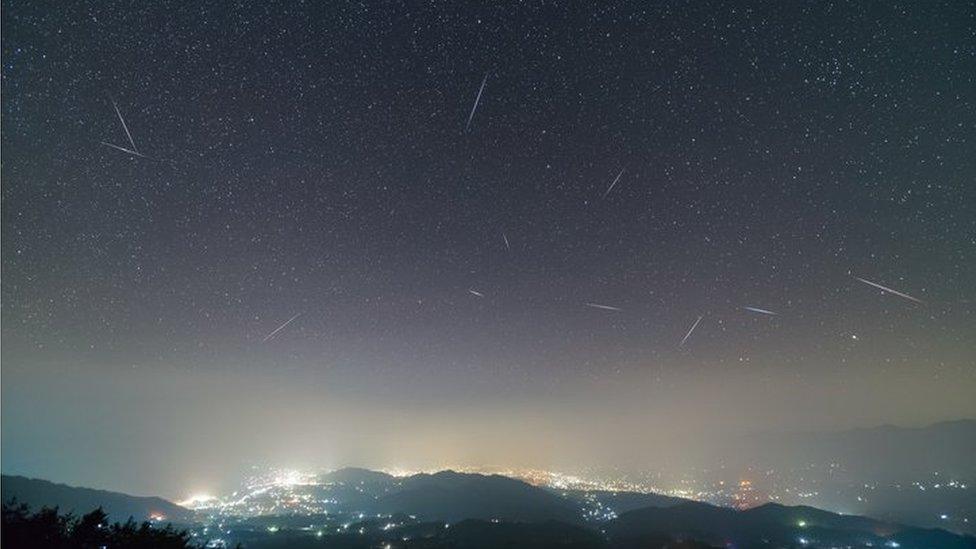Quadrantid meteor shower 2023: When is it? How can I see it?
- Published
- comments

This year's Quadrantids will peak on 3-4 January 2023
Calling all stargazers of the UK, it's time for the first major meteor shower of the year - the annual Quadrantid meteor shower!
The "Quads" shower happens every January and is described as an above-average meteor shower, meaning that it produces around 110 shooting stars flying in the sky an hour.
This year, astronomers say the best time to catch its peak is on 3-4 January 2023.
It's among the strongest showers to illuminate the sky, so if you are lucky you should be able to see something - even Nasa calls it "one of the best annual meteor showers!"
Find out more about the Quadrantids below and don't forget to let us know in the comments if you're planning on watching the meteor shower!
What is the Quadrantid meteor shower?
Quadrantids often appear as blue meteors with fine trails behind them
The Quadrantid meteor shower is known for bright fireball meteors.
Fireballs are larger explosions of light and colour that can last longer than an average meteor streak.
The Quadrantids got their name because they seem to come from a former constellation called Quadrans Muralis.
Quadrans Muralis was discovered in 1795 by a French astronomer but is no longer recognised by the International Astronomical Union and is today considered part of the constellation of Bootes.
So - confusingly - the meteor shower is sometimes called the Bootids!
When is it?
The Quadrantids are the first major meteor shower of the year
In 2023, astronomers at the Royal Observatory Greenwich estimate the peak to be on the 3-4 January.
However, the first Quadrantid meteors have already begun to appear in the Earth's atmosphere.
Unlike other meteor showers which tend to stay at their peak for about two days, the Quadrantid peak only lasts a couple of hours.
Where does it come from?
The meteors appear to radiate from the Bootes constellation
It's believed the Quadrantids are created from dust left behind by an asteroid called 2003 EH1.
This asteroid is thought to have once been a comet, which has now shed all of its ice and other debris and is just a big lump of solid rock.
This asteroid takes about five-and-a-half-years to orbit the sun.
When the Earth's orbit hits that trail of space debris rubble from 2003 EH1, the dust is knocked out of place and falls into the atmosphere, burning up and creating streaks of light.
The shooting stars travel at 41km (25 miles) per second.
What's the best way to see it?
You won't need a telescope like this to see the Quadrantid meteor shower - you should be able to see it with the naked eye
The shooting stars will be visible to the naked eye so no special equipment is necessary.
However your eyes will need to adjust to the darkness in order for you to view the meteors more clearly.
Experts recommend that you step outside and look up at the sky 20 minutes before the shower is due to take place, so your eyes can adjust to the night sky.
If possible it's better to go away from urban areas where the light pollution from buildings, car headlights, street lamps and neon signs can cause too much glare.
Wrap up warm and bring a chair and some thick blankets so you can sit or lie down and look up for long periods without getting neck strain, or getting too chilly.
Good luck, stargazers!
- Published14 September 2021
- Published29 December 2022
- Published3 November 2022
